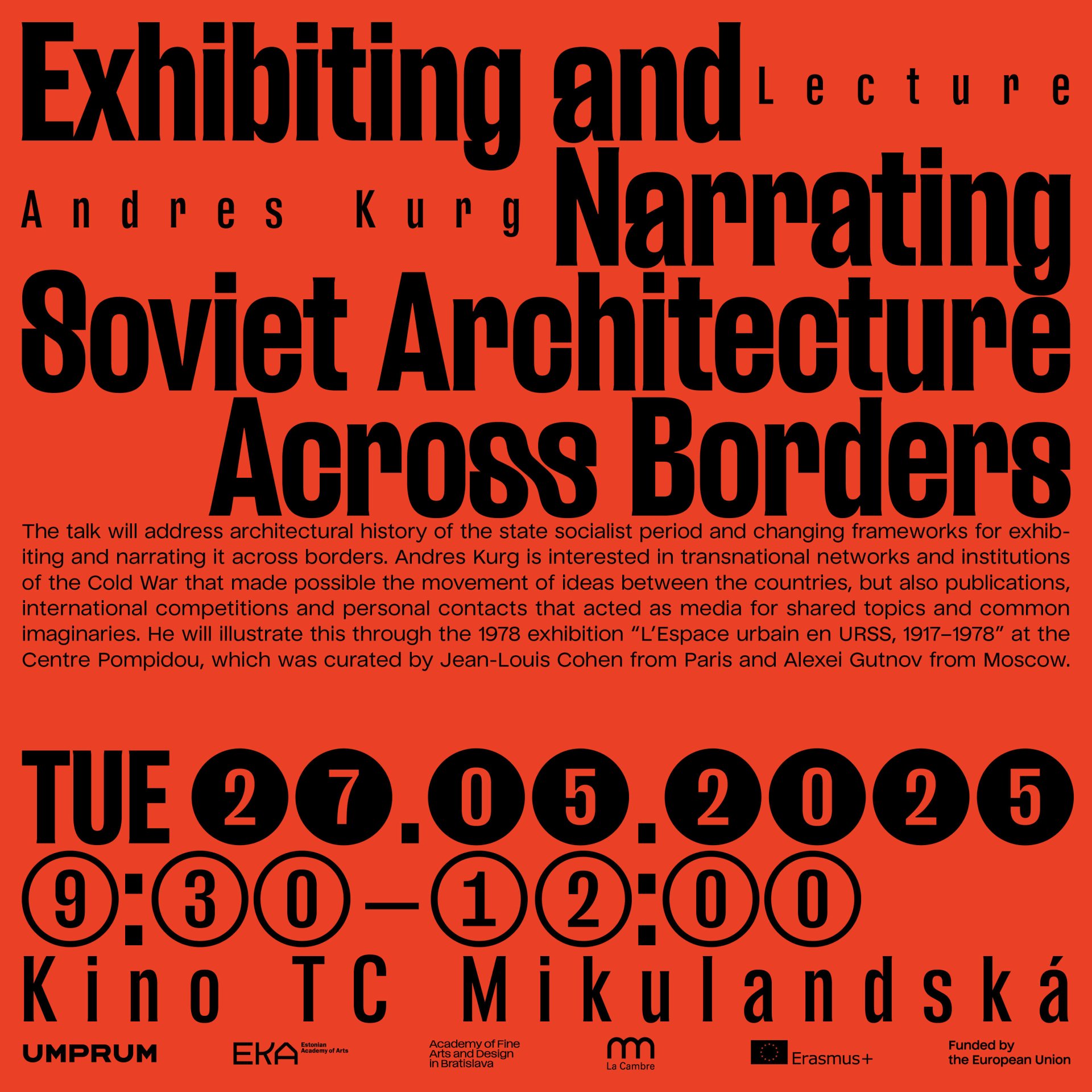Centrum doktorských studií
23. 5. 2025
27. 5. 2025 od 9.30 hodin
Technologické centrum UMPRUM, Mikulandská 134/5, Praha 1, 3. patro, kino
V rámci týdenního mezinárodního workshopu pro studující doktorských programů proběhne i přednáška s následnou diskusí prof. Andrese Kurga (Estonian Academy of Arts) s názvem Exhibiting and Narrating Soviet Architecture Across Borders
Exhibiting and Narrating Soviet Architecture Across Borders
Andres Kurg
This talk will address architectural history of the state socialist period and changing frameworks for exhibiting and narrating it across borders. I am interested in transnational networks and institutions of the Cold War that made possible the movement of ideas between the countries, but also publications, international competitions and personal contacts that acted as media for shared topics and common imaginaries.
I will focus on a 1978 exhibition “L’Espace urbain en URSS, 1917-1978” at the Centre Pompidou, that was curated by Jean-Louis Cohen from Paris and Alexei Gutnov from Moscow. The exhibition stood out for challenging the conventional periodisation of Soviet architecture as well as attempting to balance its standard Moscow-centric geography. It presented a continuous history of architecture from 1917 till the present, including the avant-garde phase, the socialist realist period and the Khruschev-era return to modernism. In addition, a large share of the contemporary examples came from the country’s smaller republics like Uzbekistan, Armenia, Estonia or Lithuania.
Recognising the novelty of these choices, the concept and structure of the exhibition presents retrospectively however also several controversies. Its historical and geographic continuity was problematic from the perspective of the country’s Western peripheries which had been annexed to the USSR in 1940 and where the development of architecture during the inter-war years had been on a different trajectory. Also, in the late 1970s architects in smaller republics had started increasingly to criticise the large centralized design offices that subjected their work to bureaucratic norms and regulations and, increasingly, to establish different paths for their own professional practice. This national fragmentation intervened also in the temporality of architectural narratives, undoing the idea of a singular (communist) future. For example, if a Lissitzkian display board by Estonian architects Vilen Künnapu and Jüri Okas illustrated in the exhibition context the projected future of “Soviet urban space”, it had been conceived two tears earlier in a context of a critique towards the centrally regulated profession and its rigid aesthetic dogmas.
Finally, I want to bring these controversies together with the present moment and ask how to engage in a mediation of Soviet architectural history today, avoiding on the one hand a subjection of the peripheries to the (imperial) centre, but on the other hand a fragmentation into multiple national histories that have erased past commonalities.
Přednáška se uskuteční v rámci Blended Intensive Programme Artistic Research within European Diversities, který je podpořen v rámci Erasmus+.
